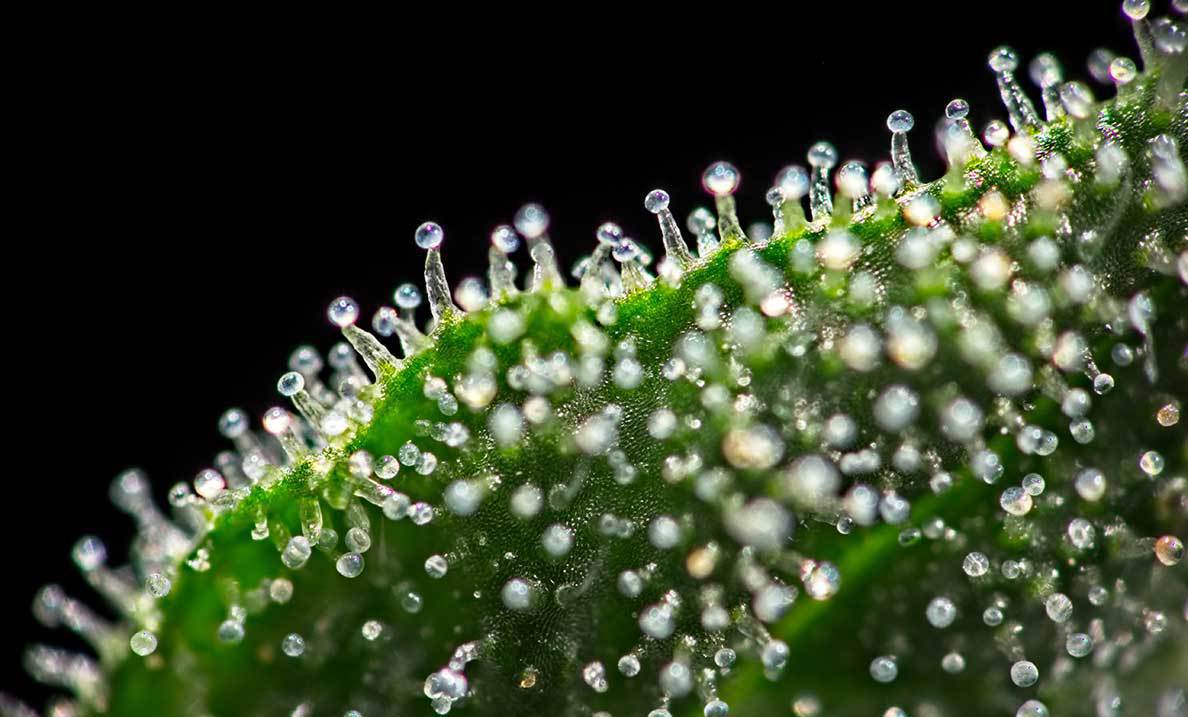Many components of the cannabis plant account for its therapeutic properties, but there is none more famous and adored by millions of consumers nationwide than tetrahydrocannabinol (THC). This cannabinoid is the primary psychoactive component. It’s what provides users with psychoactive effects, which is why so many consumers seek it out with enthusiasm. They often step inside their neighborhood dispensary looking to get the most bang for the buck, scouring the shelves for strains with the highest THC on the label. After all, bigger is better in America, so people tend to gravitate toward cannabis products packed with more THC, as they are often seen as being of higher quality. Only this purchasing philosophy is not exactly perfect.
Contrary to what the average cannabis customer has believed all these years, there are more factors attributed to quality and potency than just THC. Yes, it’s true. Most of you are buying your weed wrong.
Cannabis consumers, from the novice to the aficionado, are guilty of judging the quality of their weed based on THC alone. Don’t feel bad if you’ve made this mistake. You’re not alone. Ask any retail cannabis professional about the most sought-after pot products (it doesn’t matter if it’s flower or concentrates). They’ll tell you it’s the ones with the highest THC. These strains don’t necessarily have more psychoactive properties than any other product, but they cost a lot more.
“When cannabis tests at more than 25 percent THC, dispensaries can justify charging $75 or more for a store-bought eighth—because there’s a very good chance people will pay it, confident that they’re taking home the best and most potent weed available,” cannabis writer Chris Roberts wrote for Forbes. “If the weed’s in the teens, well, it had better be cheap. The problem is that this is all wrong. All of it.”
Marijuana is now legal in over half the nation for medicinal and recreational use. But the industry is still very green – no pun intended. For decades, the cannabis consumer was forced to buy whatever product their neighborhood dealer had to offer (and you can bet they didn’t know the strain’s name, the THC content, or any of the terpene profiles). Fortunately, that has all changed now in states where weed is legal. All we have to do is look at the label to see most of what we want to know about a cannabis product (testing fraud aside). The consumer can select from a throng of strains, edibles, and concentrates that, depending on countless factors, including cultivation practices and harvest time, are clean and generate unique effects. Yet, most cannabis consumers still only gravitate toward THC when it comes time to buy. Why? Well, it’s all they’ve been told is important.
It’s time for that to change.
Not only does THC content not determine the quality of the cannabis, but it also doesn’t have much to do with potency either. In fact, a recent study from the University of Colorado found that THC content is a weak indicator of strength. In many cases, products presumed more potent didn’t get the user any higher than those who consumed products with less THC. The study found that even when users were given cannabis that was 50% stronger than other products, all respondents were roughly just as stoned as the next. Lead researcher Cinnamon Bidwell had this to say: “Surprisingly, we found that potency did not track with intoxication levels. While we saw striking differences in blood levels between the two groups, they were similarly impaired.”
High THC is how the cannabis industry bilks the consumer out of more money. It’s not the most ethical practice, but it does happen. Those high THC products typically come with a much larger price tag, despite the purported effects not carrying any more weight in terms of quality and potency. Companies like to push the myth of higher quality for products marked with higher THC levels by using words like “premium” or “luxury.” But this is really just a ploy to add value to the illusion.
A well-informed consumer – something we hope to help more of you become – should consider more before spending a dime.
Although THC certainly is a determining factor for potency, there are hundreds of cannabinoids and other active components working in unison to create the performance power of pot. This is sometimes referred to as the entourage effect. In addition to cannabinoids, there are also terpenes and trichomes, all of which are crucial in determining what kind of effects a strain will produce. Without them, THC is nothing. In the June 2022 issue of High Times Magazine, California cannabis producer Brett Feldman said cannabis loses all of the magic that makes it special without trichomes. THC is a dime a dozen, he told the magazine, pointing to terpenes as the real determining factor. “The special differentiators are those terpenes that are primarily produced in the trichome head. Once you take the THC and you separate it out from those terpenes and cannabinoids in the trichomes, you’ve basically taken away the spirit and soul of what that was,” he said.
The range of cannabis trichomes is more crucial to the quality and potency of a strain than THC could ever hope to be. Although terpenes are typically associated with aroma, there is evidence that they also have healing properties. According to Leafly, terpenes are antiviral, anticancer, and show antidepressant, antimicrobial, and pain-relieving properties. But more research is needed before we completely understand these compounds. Nevertheless, we know they do more than provide a pleasant odor.
Quality cannabis also relies on the health of the individual.
Just because a strain affects a person one way doesn’t mean it will have the same effect on someone else. The endocannabinoid system (ECS) is less talked about in terms of what creates the overall effect. The ECS is a multi-faceted control system consisting of endocannabinoids, receptors, and enzymes, which assist humans in managing pain, inflammation, sleep, appetite, muscle formation, and immune function. The ECS is also instrumental in controlling our mood. Cannabis works with a person’s body. The effects of cannabis are contingent on the condition of an individual’s ECS. Of course, this means that some patients suffering from chronic pain, for example, may have better luck treating their ailment with one strain while it may not be effective in others.
Yes, this makes finding the right cannabis strain a bit more complex for the consumer than just scouring the label for high concentrations of THC. But it could also make strain selections more of an adventure. It could take some experimentation before the consumer finds one that meets their needs. And that is perfectly okay. After all, half the fun for most cannabis connoisseurs is exploring various strains. But in terms of how those strains are selected, THC content shouldn’t be the only criteria. Buying weed isn’t one-dimensional. Do some research and learn more about how the different terpenes work, and then carry that conversation into the dispensaries and force those selling pot products to up their game. Moving the industry into a new, more thorough narrative is the only way to break the hype surrounding the importance of THC in determining potency.
That said, the testing methods presently used industry wide are all we have at the moment. Laws don’t require labels to contain much more than THC/CBD content. When Kaycha Labs tests cannabis samples for potency, however, we employ state of the art technology that ensures the product(s) is what it claims. We monitor for consistency between strains and take a lot of initiative above and beyond the legal minimum to help our clients stand out to the consumer.
“Kaycha uses standardized potency methods (wherever possible due to local and state regulations) to ensure the products in one state are the same in another,” explained Kaycha Labs Colorado Chief Science Officer, Stephen Goldman. “We use harmonized technology (HPLC), extractions methods, and certified reference material (CRM) to ensure the highest accuracy.”
The science doesn’t stop there.
“We force our CRM vendors to prove their accuracy with stability studies, lot-to-lot variability measurements, and NMR data where applicable,” Goldman continued. “We include more batch controls than any market requires, including multi-technician duplicate sample preparations, to ensure the highest repeatability between samples. All our technicians are on bi-weekly calls to ensure problematic samples and best practices are dealt with immediately. These calls cover 150 chemists and ten laboratories!”













